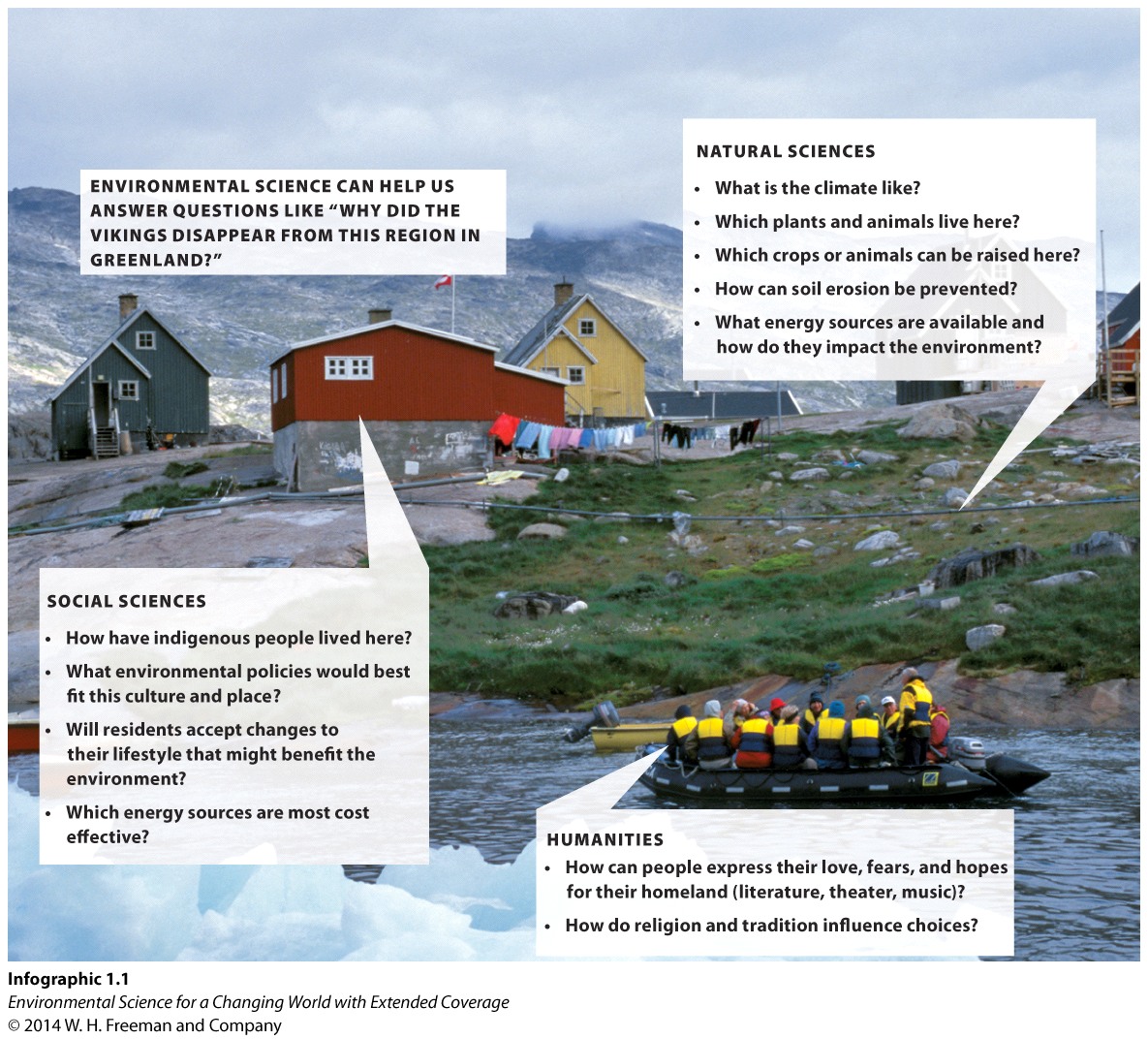
Chapter 1. Chapter 1: Environmental Literacy
What constitutes the 'environment'...

Guiding Question 1.1
What constitutes the "environment," and what fields of study collaborate under the umbrella of environmental science?
Why You Should Care
There is a well-known saying: “There are many ways to skin a cat.” If we look at how different people and different fields of study define “environment,” then we start to see a pattern. To a scientist, the environment is the physical setting—air, land, water, and living beings. To a social scientist (like a sociologist or psychologist), environment can mean the physical setting but as seen from a human-only point of view. To someone who studies humanities, the environment can mean the mental or creative framework (as in which artistic icons or heroes appeared in stories, paintings, and songs) of that place and time.
In environmental science, this diverse view is particularly appropriate. It allows us to view every situation from a number of points of view: Every academic field from literature, to philosophy, to chemistry can be an important part of research.
Test Your Vocabulary
Choose the correct term for each of the following definitions:
| Term | Definition |
|---|---|
| A scientific approach that generates research findings that help solve practical problems. | |
| A scientific approach that investigates the natural world through systematic observation and experimentation. | |
| A basic understanding of how ecosystems function and of the impact of our choices on the environment. | |
| An interdisciplinary field of research that draws on the natural and social sciences and the humanities in order to understand the natural world and our relationship to it. |

Question Sequence
How will climate change affect Minnesota? Choose the correct field of study for each question from the drop-down menu.
1.
How will earlier springs affect the flowering of plants?
2.
Will fire frequency increase as wetland ecosystems dry out?
3.
Which insect pests could spread into these warming forests?
4.
What is the maximum temperature that will allow sugar maples to grow in a warmer Minnesota?
5.
How will climate change affect forestry companies?
6.
What effect will climate change have on indigenous people’s relationship to the North Woods?
7.
What psychological impacts will climate change have on local people?
8.
What economic effects will there be on ecotourism in the North Woods?
9.
With climate change, what will happen to the literary traditions of the North Woods?
10.
How will political affiliation affect local response to climate change?
Question Sequence
Question Sequence
Many scientists’ research can be grouped into either "empirical" or "applied" categories, depending on what the experiment tests and how the results are used. Each has its own strengths and weaknesses, and both contribute to an increased understanding of the world around us.
Choose the correct drop-down answer for each of the following experiments:
11.
Different species (some endangered, some not) are measured in a variety of park sizes.
The population size of endangered species in parks is compared to the size of the parks in which they live.
12.
Alternative fuels can decrease air pollution:
Engines using different alternative fuel mixes are run in a laboratory and their tailpipe emissions are measured.
Air pollution in three cities with a growing number of alternative-fuel vehicles is monitored.
13.
Pollution shortens human life spans.
Mice in a laboratory are exposed to increasing dosages of a new chemical, and their health is measured.
Life span and cancer rates are measured in a suspected "cancer cluster" near a known Superfund pollution site.
Activity results are being submitted...